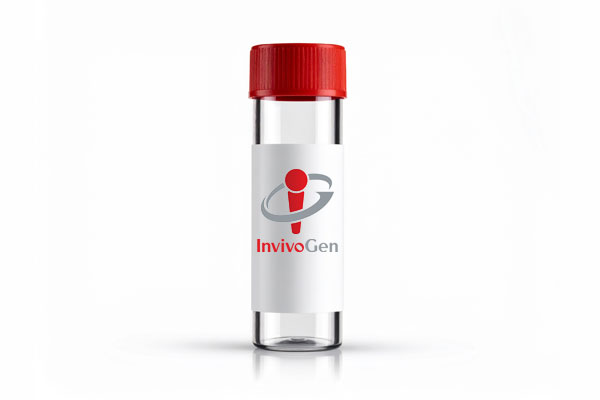
pUNO1-hSTING-beta
-
Cat.code:
puno1-hsting-beta
- Documents
Expression-ready ORF Clones
Human STING gene, isoform lacking exons 1-5
STING (stimulator of interferon genes; also known as TMEM173, MITA, MPYS, and ERIS) is essential for the IFN response to microbial or self-DNA, and acts as a direct sensor of cyclic dinucleotides (CDNs).
CDNs are important messengers in bacteria, affecting numerous responses of the prokaryotic cell, but also in mammalian cells, acting as agonists of the innate immune response.
Human STING-ß, identified in THP-1 cells, is an alternatively spliced isoform of human STING that contains the functional C-terminal domain but lacks the N-terminal transmembrane domains. hSTING-ß transcript is expressed from an alternative promoter within intron 5. hSTING-ß starts with 25 amino acids translated from intron 5, followed by exons 6, 7, and 8. It has been reported that hSTING-ß acts as a negative regulator of full-length STING by interacting with and sequestering STING, TBK1 and CDNs. [1].
Reference:
1. Wang PH. et al., 2018. A novel transcript isoform of STING that sequesters cGAMP and dominantly inhibits innate nucleic acid sensing. Nucleic Acids Res. 46(8):4054-4071. 2
Specifications
Human STING-β (pUNO1-hSTING-beta)
ORF size : 696 bp
Subclone : BspEI - NheI
Contents
- 20 µg of lyophilized DNA
- 2 x 1 ml blasticidin at 10 mg/ml
![]() Product is shipped at room temperature.
Product is shipped at room temperature.
![]() Lyophilized DNA should be stored at -20°C. Upon receipt, store blasticidin at 4°C or -20°C.
Lyophilized DNA should be stored at -20°C. Upon receipt, store blasticidin at 4°C or -20°C.
![]() Resuspended DNA should be stored at -20°C and is stable for up to 1 year.
Resuspended DNA should be stored at -20°C and is stable for up to 1 year.
![]() Blasticidin is a harmful compound. Refer to the safety data sheet for handling instructions.
Blasticidin is a harmful compound. Refer to the safety data sheet for handling instructions.
DOCUMENTS
Documents
Safety Data Sheet
Certificate of analysis
Need a CoA ?